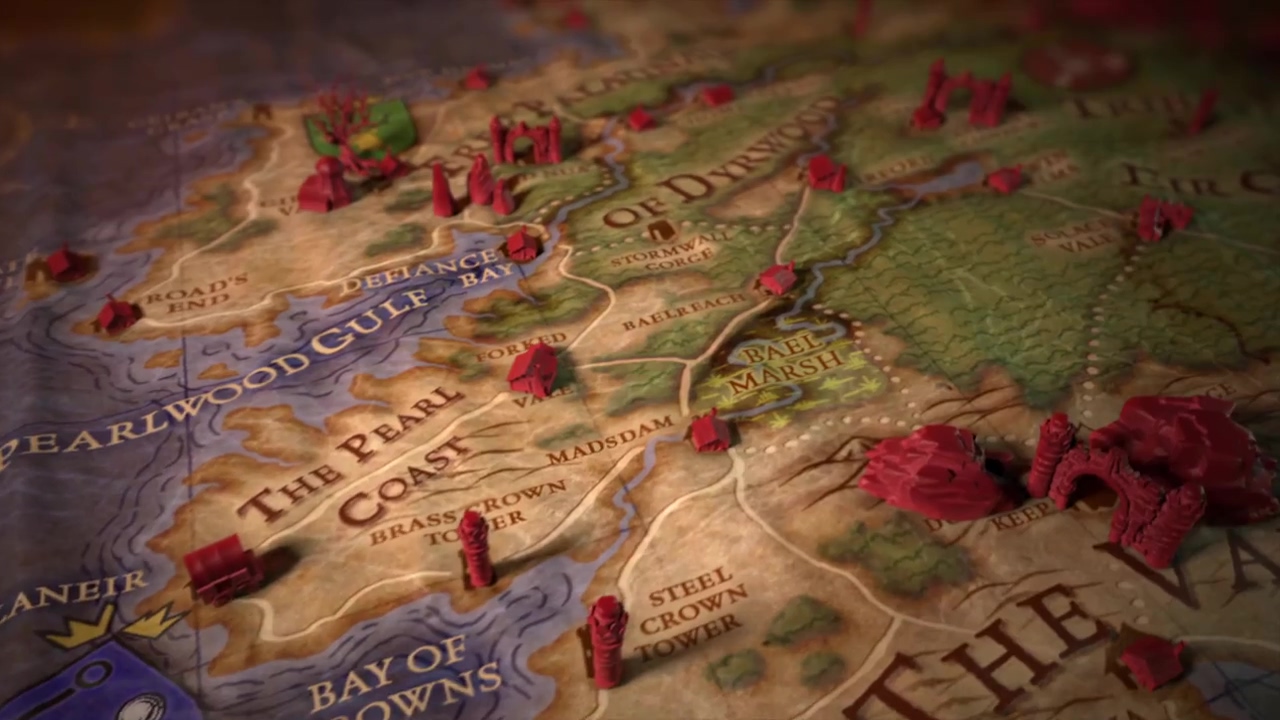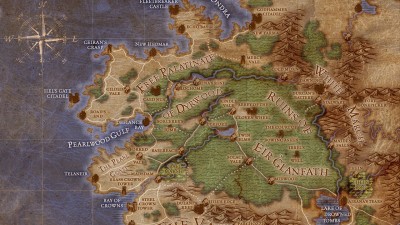A good game is one that you enjoy. The gameplay, the visuals, the story - these are all important features of a good game. A great game, however, is one that you not only enjoy but one that makes you feel like you’re totally immersed in the game world.
This is a feat that’s only been accomplished by a select few. The likes of Assassin’s Creed: Black Flag, Deus Ex: Human Revolution and, of course, Pillars of Eternity - all are games that suck you in and make you feel like you’re a part of their world. If you missed my Pillars of Eternity review, then go and take a look. I gave it 10/10, so you can probably guess how I feel about it. In my review, I mostly discussed elements of gameplay, graphics and story design, but I only touched upon the game world. So it felt fitting that in the first of a new regular series looking at some of the best examples of worldcrafting in videogames that I start off with Obsidian’s modern masterpiece.
 The amount of lore in Pillars of Eternity is substantial. Scarily substantial. Take a quick look at the Pillars of Eternity wiki and there’s enough there to make you faint on one topic alone (or was that just me?). This is something that’s essential in the creation of a great game world - attention to detail and realistic writing are paramount, and Pillars of Eternity has both of these in droves.
The amount of lore in Pillars of Eternity is substantial. Scarily substantial. Take a quick look at the Pillars of Eternity wiki and there’s enough there to make you faint on one topic alone (or was that just me?). This is something that’s essential in the creation of a great game world - attention to detail and realistic writing are paramount, and Pillars of Eternity has both of these in droves.
As Obsidian was working outside the Dungeons & Dragons license, they had to build everything from the ground up. This meant a whole new world: new kingdoms, new religions and new history. Pillars of Eternity‘s world isn’t drawn in broad strokes; it’s layered thick on canvas, like an oil painting that expresses its subject as much in the topography and texture of the paint being used as much as it does in the visual style of its delivery.
Pillars‘ world is Eora, and is made up of various continents and islands. The game itself takes place in the Eastern Reach (roughly the size of Spain), but there’s plenty more to Eora than what we actually get to see in Pillars.
The Eastern Reach itself is made up of the Palatinate of Dyrwood, Eir Glanfath, the Vailian Republics, the Penitential State of Readceras, White March and The Pearl Coast, and you get to visit  them all throughout your travels in the game. Each area is populated with unique NPCs, quests, enemies, buildings, items and books filled with lore. This makes each region you visit have a unique atmosphere and gives you the incentive to explore the world, immersing yourself in the culture that Obsidian has created. The timeline of Pillars of Eternity stretches as far back as 12,000 years to the pre-history of Eora, with the years 0 - 2823 having a more detailed account of events.
them all throughout your travels in the game. Each area is populated with unique NPCs, quests, enemies, buildings, items and books filled with lore. This makes each region you visit have a unique atmosphere and gives you the incentive to explore the world, immersing yourself in the culture that Obsidian has created. The timeline of Pillars of Eternity stretches as far back as 12,000 years to the pre-history of Eora, with the years 0 - 2823 having a more detailed account of events.
There’s also a rich source of information on the areas of the world that we don’t get to see in-game. If you take the time to read the books and notes that you find throughout the Eastern Reach, you’ll learn so much more about the countries and geography of Eora (I’m a little ashamed to admit that I feel like I know the geography and politics of Eora better than that of Earth). Having such a rich depth of background gives the experience a much more immersive feel. Whether it’s the Aedyr Empire on the equator, or the Deadfire Archipelago, every corner of Eora is detailed and explored in rich detail - if you go looking for it. While there is a degree of exposition dumping in Pillars of Eternity, much of the background of the game’s setting is left for you to find out for yourself, taking a leaf from Bethesda’s book. The backstory is all there, but you’re not clobbered over the head with it at every opportunity.
I can’t stress enough just how much the attention to detail in this game impresses. Obsidian even went so far as to create a calender. The Anni Iroccio is 150 years old (in-game) and is of Vailian origin. According to the lore, the Anni Iroccio was created by a Vailian inventor named Iroccio, who calculated that it takes the world or Eora 334 days (each lasting 27 hours) to orbit the sun. He then took the 9 months from the Aedyran calender and split them into 16 months of 20 days, with each  season consisting of 4 months. The length of each month corresponds with how long it takes one of Eora’s moons, Belafa, to orbit the planet. Each season ends with 3 days, neither part of a season nor month, that the people use to celebrate the transition period. The final 2 days of the year are New year and Mid year, there to herald in the beginning and mid-point of the year. The level of detail is incredible, and the calendar is just one of hundreds of incidental details that the developers crammed into the game. Often, the documents you come across feel so believable that you could almost be convinced you were reading a real historical account.
season consisting of 4 months. The length of each month corresponds with how long it takes one of Eora’s moons, Belafa, to orbit the planet. Each season ends with 3 days, neither part of a season nor month, that the people use to celebrate the transition period. The final 2 days of the year are New year and Mid year, there to herald in the beginning and mid-point of the year. The level of detail is incredible, and the calendar is just one of hundreds of incidental details that the developers crammed into the game. Often, the documents you come across feel so believable that you could almost be convinced you were reading a real historical account.
Like many fantasy games there’s a rich pantheon of gods in Pillars of Eternity, each an aspect of one or more particular facet of life in Eora. Each of these gods feature in the storyline in one way or another, making religion feel like an organic and important aspect of Pillars of Eternity, rather than something that is simply there, in the background, for the sake of it.
And this is the case with every part of the world of Eora. Nothing you read or discover feels unimportant; it all feels relevant, no matter how minor the detail. This is what makes the world of Eora so immersive and fantastic to explore - it doesn’t feel like Obsidian constructed Eora; it feels as though they discovered it, its histories and politics found residing in some out-of-the-way bookshop specializing in esoteric volumes of worlds and civilizations that may or may not have once existed.
There’s so much more I could say: I could describe the political machinations between kingdoms over the centuries, or the little rituals and superstitions found in the smallest village. I could describe the folklore, found etched on tombstones and hidden in weathered journals. But the best way to explore Eora is to experience it for yourself. It’s certainly worth taking a gander at the Pillars of Eternity wiki - there’s so much information there that you can lose yourself for hours; but something of the character of Obsidian’s creation is lost by simply digesting its detail in that way.
Many games strive to convince you that their world is real, and come off feeling forced. Eora simply is, the product of a confident developer working at the peak of its ability.
You don’t simply play Pillars of Eternity; you live it.



